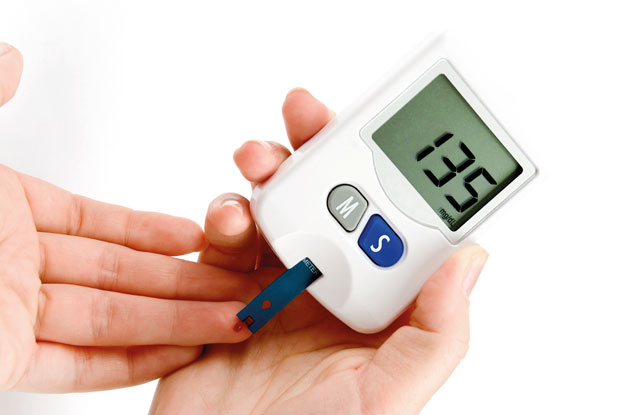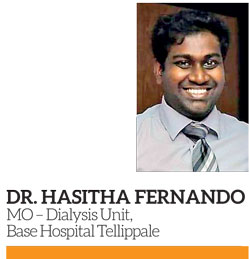16 Feb 2018 - {{hitsCtrl.values.hits}}

Although currently there is no cure for Type 1 Diabetes, the Type 2 form-which has the highest prevalence the world, is preventable in through life style alterations
Diabetes Mellitus, simply known as Diabetes, is a chronic disease due to impaired secretion of Insulin from Pancreas which leads to the deregulation of blood glucose levels in our bodies. It is a disease that is rapidly reaching epidemic proportions throughout the world. There are an estimated four million diabetics in Sri Lanka alone and more young people are getting afflicted by the malady on a daily basis. According to the Diabetes Association of Sri Lanka the prevalence of Diabetes in the country has risen from 16 percent in 2009 to 20 percent in 2014 with urban dwellers having a higher prevalence. It’s a no brainer that Diabetes has the people of the world in its vice like grip. But what can we do to prevent ourselves from falling victim to this dreadful predicament? Read on to
find out.
Types
There are three main forms of Diabetes. The commonest form of Diabetes is Type 2 Diabetes which makes up 90 percent of all cases of this ailment. This form of Diabetes used to be called Adult onset Diabetes or Non-Insulin dependent Diabetes. This was before the discovery of a subset of a form of Diabetes in the younger age group, named Maturity Onset Diabetes of the Young (MODY). It is characterized by Insulin resistance or relative insulin deficiency and is often associated with obesity and lack of exercise.
The second most prevalent form of Diabetes is Type 1 Diabetes which used to be called Juvenile Onset Diabetes. This happens due to the body’s own immune system attacking the Insulin producing cells in the Pancreas. The reason this occurs is not fully understood, but it leads to little to no insulin production by the pancreatic cells. If people with Type 1 Diabetes have no access to insulin the results could be fatal.
The third type of Diabetes is known as Gestational Diabetes Mellitus (GDM) which occurs during pregnancy. With the completion of the pregnancy the blood sugar levels revert back to normal, but women who have had GDM, have a higher risk of developing Type 2 Diabetes later on in their life. The complications of Diabetes include elevated risk for Heart Disease and stroke, reduced vision and blindness, kidney disease and increased risk for lower limb amputation.
Treatment and management
Although currently there is no cure for Type 1 Diabetes, the Type 2 form-which has the highest prevalence the world, is preventable in through life style alterations. Of these lifestyle modifications, physical activity still remains one of the main pillars. Elevated physical activity is important in weight reduction and is linked to decreased blood pressure, reduced resting heart rate, increased insulin sensitivity, improved body composition and overall psychological well-being. Thirty minutes of exercise a day can reduce the risk of Type 2 Diabetes by 40 percent! Brisk walking, swimming, cycling and dancing are just some of the ways to do so.
A well balanced and nutritious diet is essential for health. In Sri Lanka if one takes for consideration a plate where lunch is served, it is abundantly obvious, that we consume a great deal of rice in proportion to vegetables. The trick is to reverse this way of food consumption. By increasing our vegetable intake and reducing the rice consumption we decrease our carbohydrate intake. A healthy diet reduces risk factors associated with cardiovascular diseases.
Other lifestyle modifications to consider include, quitting smoking. Smoking increases abdominal fat accumulation and promotes insulin resistance. All smokers should be encouraged to quit smoking. However, weight gain is a common side effect when quitting smoking and therefore dietary advice on avoiding weight gain should also be given simultaneously (e.g. managing cravings and withdrawal symptoms by using short bouts of physical activity as a stress-relief activity, rather than eating snacks).
There is also evidence of a link between depression and both diabetes and cardiovascular disease. Women suffering from depression have a 17 percent higher chance of developing Diabetes. Both short (<6h) and long (>9h) sleep durations may be associated with a higher risk of developing type 2 diabetes. Sleep deprivation may impair the balance of hormones regulating food intake and energy balance. Long sleep durations may be a sign of sleep-disordered breathing or depression and should be treated appropriately.
Diabetes has almost surpassed all other major illnesses and has altered the lives of many. The increased prevalence of this affliction is also a major burden to a developing country like Sri Lanka. So act now, stay fit and promote healthy lifestyles in others, as you strive to make a difference for a
better tomorrow.
23 Dec 2024 44 minute ago
23 Dec 2024 1 hours ago
23 Dec 2024 1 hours ago
23 Dec 2024 1 hours ago
23 Dec 2024 2 hours ago